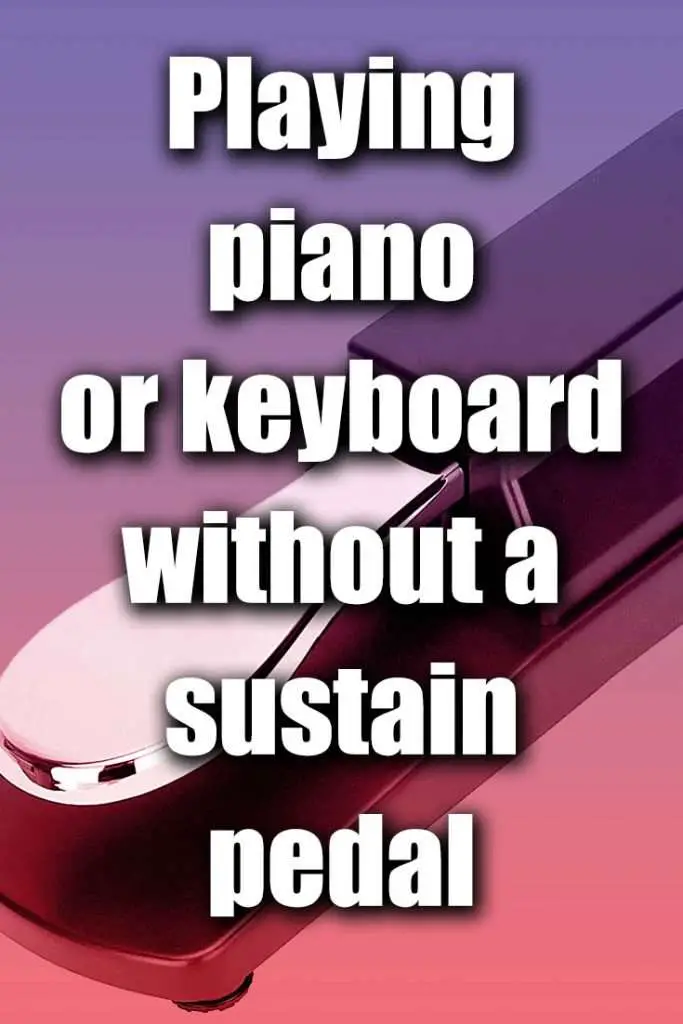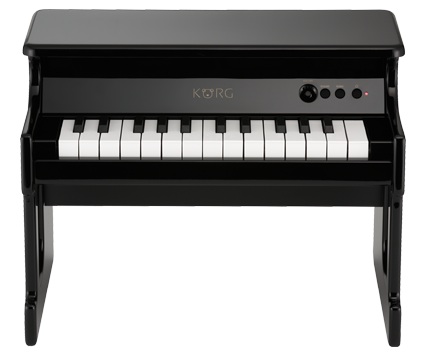Have you ever been stuck in a situation where the piano, keyboard, or synth you’ve been playing either has no sustain pedal, or the one that is attached works intermittently, or not at all?
I have, a number of times, and let me tell you it’s not much fun at the time.
Without wanting to sound condescending (apologies if I do), if you’re just starting out on the piano or keyboard, or you’re primarily involved with sequencing or computer-based composition, then you may not realise just how vital the sustain pedal is to many pianists and keyboard players.
When it’s missing, it’s very obvious—at least to you, if not to your audience.
Here are some ideas for how to get around the problem of a missing or malfunctioning sustain pedal. Feel free to add your own hints and tips in the comments section below.

Bring Your Own Sustain Pedal
Several times, I’ve used someone else’s keyboard, which has been perfectly adequate except that they’d never bought a sustain pedal for it. Many lower-end keyboards don’t come with a pedal as standard even though there’s a jack for it.
The solution is to take your own. Simple switch pedals are best for keyboards and synths – they’re quite small and light and are generally fairly standardised.
A word of warning, though: take a pedal with a polarity switch on it, so you can match it to how the instrument works. Otherwise, you might find that notes are cut off when the pedal is depressed and sustained when it’s lifted.
If that fails, sometimes you can reverse the polarity of a normal pedal by holding it down while switching the keyboard on, but that doesn’t always work.
A second word of warning: Some pedals designed for digital pianos won’t work with some keyboards, because they’re not simple switches (on/off). They often send variable voltage, in order to be able to simulate half-pedalling in compatible digital pianos. Example, my Yamaha P140’s pedal (which when used with the digital piano supports half-pedalling) won’t work with my Novation synth when plugged into the sustain pedal jack.
Generally, standard switch pedals will work with digital pianos, but you won’t be able to utilise half-pedalling.
If you know you’re going to be playing a lot of digital pianos and you’re unfortunate to come across one without a working sustain pedal, then you’ll need to take your own. They’re heavier and bulkier, but worth the effort.
Practice Techniques For Playing Without A Sustain Pedal
Every so often, practice playing music without a sustain pedal. You will almost certainly have to adapt your playing technique to produce a smoother sound. This will depend a lot on what styles of music you’re playing.
Tips and suggestions:
- As you don’t have the “luxury” of sustaining any notes, you will have to physically hold down the keys for longer.
- Try “walking” and “sliding” between different notes and chords where smoothness is required. It may feel uncomfortable, and it’s not great technique, but if that’s your only option, then you’re stuck with it.
- If you’re playing with other instrumentalists, then you can probably get away with playing less. Can you introduce more “chops” and staccato (short, quick notes) into the style?
- if you’re playing a keyboard or synth, consider using more “pad” and string voices, particularly ones with longer release/decay times, if it fits the style.
- Repeat chords on each beat of the bar, manually sustaining them for nearly the whole beat. This will add rhythm, particularly if you’re playing solo.
- Don’t over-complicated your music: you’ll probably find complex arrangements almost impossible to carry off without a sustain pedal. Keep accompaniments as simple as possible. Boring, maybe, but less distracting.
Request Another Instrument
If you’re using someone else’s instrument (arranged in advance) and you’re prominent enough (headlining band or performing a recital, for example), then you really shouldn’t feel bad about asking for a replacement instrument or sustain pedal.
After all, it should have been up to the event organiser or venue owner to ensure that equipment being used was up to the job.
Don’t be fobbed off with those (particularly non-musicians) who say you should just muddle through, or it “can’t be that difficult”. They probably wouldn’t expect a guitarist to play with a string missing, or with no amplification, or a violinist to play without a bow.
Of course, if it’s your own equipment that’s faulty, see below.
Be Prepared, Don’t Cut Corners
I struggled through several public “performances” with an intermittent sustain pedal. Occasionally it would stick in one position (on or off), or not make contact when I needed it to.
Given that basic pedals aren’t that expensive, and generally existing ones aren’t worth trying to repair (probably not so true with digital piano pedals), buy a new one as soon as an old pedal starts to falter.
Otherwise, it will let you down in the middle of a performance. Generally, pedals gradually lose contact, rather than dying overnight, so if it starts to deteriorate during a live performance, you’ll hopefully survive to the end, when you can bin it and buy a new one.
Better still, have a spare standing by ready.
So there you are. Just a few ideas for coping without a sustain pedal.
Share your own thoughts below.




5 thoughts on “Playing piano or keyboard without a sustain pedal”
Thanks for the advices. I have one of this cheaper synth’s (a roland juno-d). Luckily I can swap the on/off-order in my keyboard, because with standart preferences it’s reverse and that’s unplayable…
🙂
On some keyboards, it is possible to adjust the pedal polarity via the instrument itself (i.e., global settings). That’s an option to check if you’re in a pinch.
And this is yet another reason–albeit a more obscure one–why keyboardists in all genres should practice lots and lots of Bach!
This happened to me last night; new keyboard, sustain pedal worked in reverse. Very annoying. Managed to muddle through, with a mixture of pads and playing as you describe, but felt horrible!
I find the whole thing really annoying; is it really impossible for keyboard manufacturers to adopt one standard polarity re foot switches?
Agree with you Matt. Even more frustrating is the lack of apparent build quality on some of the simple switch sustain pedals. The little pad button (found on one of the Yamaha pedals at least) seems to wear out (or lose contact) rather quickly. Mind you, having said that, the latest one I’ve bought for my synth has been holding out pretty well.